1. Evaluate
1.1. Compare and Contrast
1.1.1. Concept mapping software (e.g., Inspiration)
1.1.2. Web searches
1.1.3. Mathematica
1.1.4. MathCad
1.2. Test a Solution
1.2.1. Scientific calculator
1.2.2. Graphing Calculator
1.2.3. Spreadsheet
1.2.4. Mathematica
1.2.5. Geometry Expressions
1.3. Test a Conjecture
1.3.1. Geometer Sketchpad
1.3.2. content-specific interactive tool (e.g., ExploreMath)
1.3.3. statistical packages (e.g., SPSS, Fathom)
1.3.4. online calculator
1.3.5. Robotics
1.4. Evaluate Mathematical Work
1.4.1. Online discussion group
1.4.2. Blog
1.4.3. Mathematica
1.4.4. MathCad
1.4.5. Inspire Data
2. Consider
2.1. Read Text
2.1.1. Document Camera
2.1.2. Content-Specific Interactive Tools (e.g. ExploreMath)
2.1.3. Presentation or video creation software
2.1.4. video clips
2.1.5. video conferencing
2.2. Attend to Demonstration
2.2.1. Electronic Textbook
2.2.2. Websites (i.e. the Math Forum)
2.2.3. Informational Electronic Documents (e.g. pdfs)
2.3. Discuss
2.3.1. Ask-an-expert site (e.g. Ask Dr. Math)
2.3.2. Online Discussion Group (e.g. online discussion in Edmodo math teacher groups)
2.3.3. Video conferencing (e.g. webinar)
2.4. Recognize a Pattern
2.4.1. Graphing Calculators
2.4.2. Virtual Manipulative sites (e.g., the National Library of Virtual Manipulatives)
2.4.3. Content-specific interactive tool (e.g., ExploreMath)
2.4.4. Spreadsheet
2.5. Investigate a Concept
2.5.1. Content-Specific interactive tool (e.g., ExploreMath)
2.5.2. Web searching, informational databases (e.g., Wikipedia)
2.5.3. virtual worlds (e.g., Second Life)
2.5.4. simulations
2.6. Understand or Define a Probelm
2.6.1. Web searching
2.6.2. concept mapping software
2.6.3. ill-structured problem media (e.g., CIESE Projects)
3. Apply
3.1. Choose a Strategy
3.1.1. Online help sites (e.g., WebMath, Math Forum)
3.1.2. Inspire Data
3.1.3. dynamic geometry/algebra software (e.g., Geometry Expressions)
3.1.4. Mathematica
3.1.5. MathCAD
3.2. Take a Test
3.2.1. Test-taking software
3.2.2. Quizzes in Learning Management Systems(e.g. Blackboard, Moodle)
3.2.3. online survey software
3.2.4. student response system (e.g. “clickers”)
3.3. Apply a Representation
3.3.1. Spreadsheet
3.3.2. Robotics
3.3.3. Graphing Calculator
3.3.4. Computer-aided laboratories
3.3.5. virtual manipulatives (e.g., electronic algebra tiles)
4. Intepret
4.1. Pose a Conjecture
4.1.1. Dynamic geometry software (e.g., Geometer’s Sketchpad)
4.1.2. Content-specific interactive tool (e.g., ExploreMath)
4.1.3. e-mail
4.2. Develop an Argument
4.2.1. Concept mapping software
4.2.2. presentation software
4.2.3. Blog
4.2.4. specialized word processing software (e.g., Theorist)
4.3. Categorize
4.3.1. Database software
4.3.2. online database
4.3.3. concept mapping software
4.3.4. drawing software
4.4. Interpret a Representation
4.4.1. Data visualization software (e.g., Inspire Data)
4.4.2. 2D and 3D animation
4.4.3. video clip
4.4.4. Global Positioning Devices (GPS)
4.4.5. engineering-related visualization software (e.g., MathCad)
4.5. Estimate
4.5.1. Scientific calculator
4.5.2. graphing calculator
4.5.3. spreadsheet
4.5.4. student response system (e.g. “clickers”)
4.6. Interpret a Phenomenon Mathematically
4.6.1. Digital camera
4.6.2. video
4.6.3. computer-aided laboratory equipment
4.6.4. engineering-related visualization software
4.6.5. specialized word processing software (e.g., Theorist)
4.6.6. Robotics
4.6.7. Electronics kit
5. Practice
5.1. Do Computation
5.1.1. Scientific calculators
5.1.2. graphing calculators
5.1.3. spreadsheet
5.1.4. Mathematica
5.2. Do Drill and Practice
5.2.1. Drill and practice software
5.2.2. online textbook supplement
5.2.3. Subtopic
5.2.4. online homework help websites (e.g., WebMath).
5.3. Solve a Puzzle
5.3.1. Virtual manipulative
5.3.2. Web-based puzzle (e.g., magic squares)
5.3.3. mathematical brainteaser Web site (e.g., CoolMath)
6. Produce
6.1. Do a Demonstration
6.1.1. Interactive Whiteboard
6.1.2. Video Creation software
6.1.3. document camera
6.1.4. presentation software
6.1.5. podcast
6.1.6. video sharing site
6.2. Generate Text
6.2.1. Specialized word processing software (e.g., Math Type)
6.2.2. collaborative word processing software
6.2.3. blog
6.2.4. online discussion group
6.3. Describe an Object or Concept Mathematically
6.3.1. Logo graphics
6.3.2. engineering visualization software
6.3.3. concept mapping software
6.3.4. specialized word processing software
6.3.5. Mathematica
6.4. Produce a Representation
6.4.1. Spreadsheet
6.4.2. virtual manipulatives (e.g., digital geoboard)
6.4.3. document camera
6.4.4. concept mapping software
6.4.5. graphing calculator
6.5. Develop a Problem
6.5.1. Word processing software
6.5.2. online discussion group
6.5.3. Wikipedia
6.5.4. Web searching
6.5.5. e-mail
7. Create
7.1. Teach a Lesson
7.1.1. Document Camera
7.1.2. presentation software
7.1.3. videoconferencing
7.1.4. video creation software
7.1.5. podcast
7.2. Create a plan
7.2.1. MathCad
7.2.2. collaborative word processing software
7.2.3. Concept mapping software
7.2.4. Mathematica
7.3. Create a product
7.3.1. Word processing software
7.3.2. video camera
7.3.3. animation tools
7.3.4. Mathematica
7.3.5. Geometer Sketchpad
7.3.6. MathCad
7.4. Create a process
7.4.1. Computer programming
7.4.2. robotics
7.4.3. Mathematica
7.4.4. MathCad
7.4.5. Inspire data
7.4.6. video creation software
